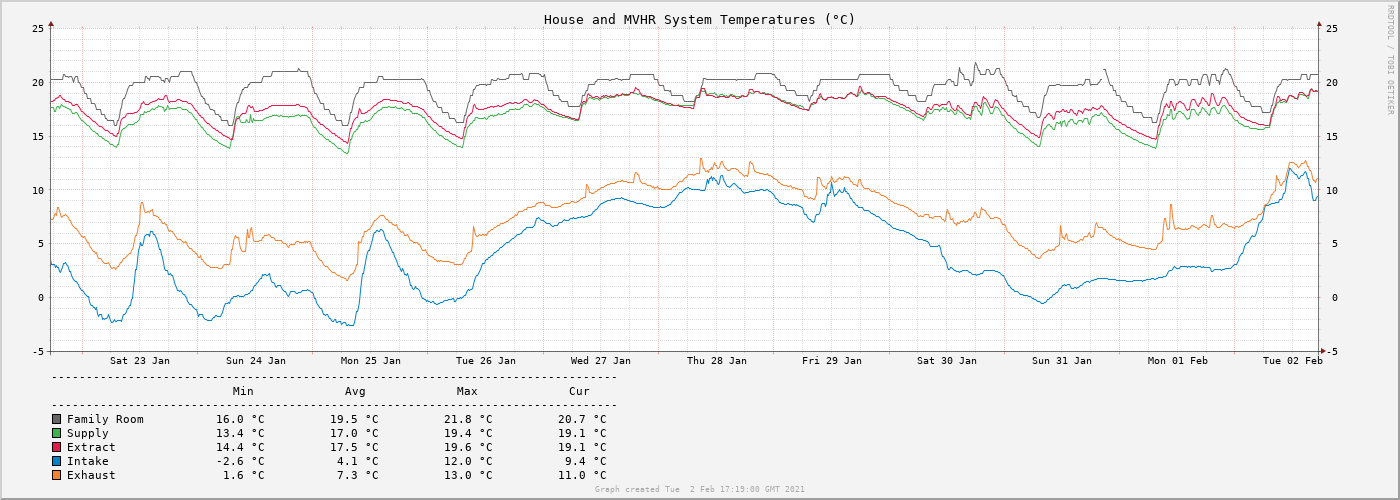For many years I've been using a Honeywell CM927 thermostat that has managed rock-solid control of room/house temperatures. You can see the stability in the graph below - noting in particular the grey line representing the temperature in the room with the stat and the red line showing the temperature of the air being extracted from the house by an MVHR and hence representing something of a whole-house average. The heating isn't on overnight so it's the heating periods (high sections of the graphs) that's the area of interest. Even squinting at the graph reveals a very obvious change in stability on Sat 30th Jan and that point being when I swapped out the Honeywell for a Nest...

Both the Nest-read temperatures and MVHR-read temperatures show a fair bit of oscillation which leads me to believe the TPI control of the Nest is nowhere near as effective as the Honeywell. Or am I being too impatient in reaching this conclusion and should give the Nest longer to learn the responsiveness of the house and heating system?

Both the Nest-read temperatures and MVHR-read temperatures show a fair bit of oscillation which leads me to believe the TPI control of the Nest is nowhere near as effective as the Honeywell. Or am I being too impatient in reaching this conclusion and should give the Nest longer to learn the responsiveness of the house and heating system?


